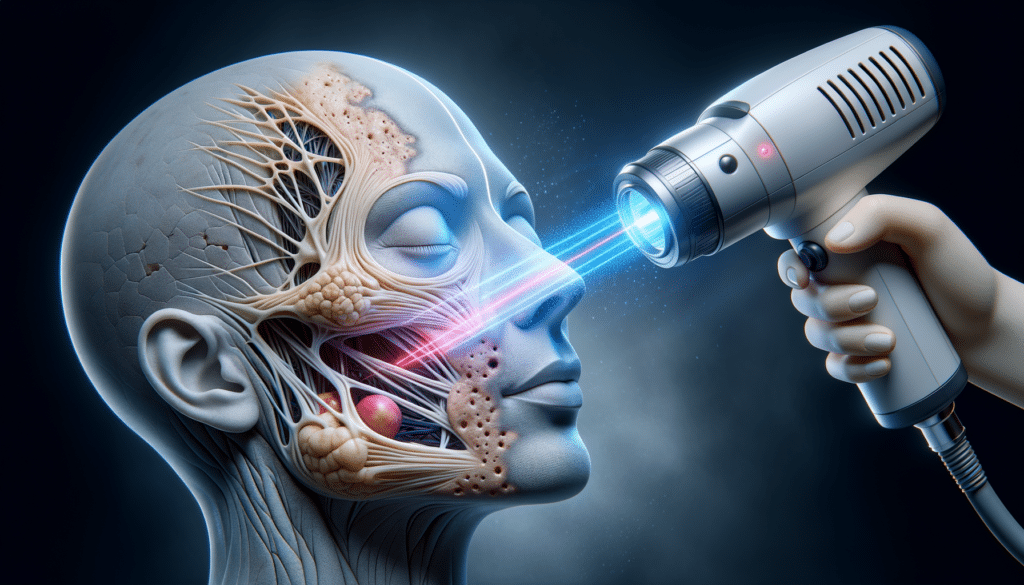Understanding Laser Skin Treatment: An Overview
Laser skin treatment has emerged as a beacon of hope for individuals seeking to rejuvenate their skin and address various dermatological concerns. This technology uses focused light to treat and improve skin conditions, offering a non-invasive alternative to traditional surgical procedures. The appeal of laser treatment lies in its precision, allowing practitioners to target specific areas without affecting the surrounding skin. This treatment can address a myriad of issues, from reducing wrinkles and scars to treating pigmentation disorders and removing tattoos.
At the heart of laser treatment is a simple yet powerful principle: selective photothermolysis. This involves the selective destruction of targeted tissues using thermal energy, which is absorbed by specific chromophores in the skin. Different types of lasers are used depending on the skin issue being addressed, such as ablative lasers for resurfacing and non-ablative lasers for stimulating collagen production. This versatility makes laser treatments suitable for a wide range of skin types and conditions, enhancing its popularity in the dermatological field.
Types of Laser Skin Treatments
Laser skin treatments can be broadly categorized into ablative and non-ablative lasers, each serving different purposes and offering distinct benefits. Ablative lasers, such as CO2 and Erbium lasers, work by removing the outer layers of the skin, making them ideal for treating deeper wrinkles, scars, and warts. These treatments often require a longer recovery period but yield significant improvements in skin texture and appearance.
Non-ablative lasers, on the other hand, focus on stimulating collagen growth without removing the skin’s surface. This category includes treatments like Nd:YAG and Alexandrite lasers, which are effective for treating rosacea, spider veins, and pigmentation issues. Non-ablative treatments generally have shorter recovery times and are less invasive, making them a popular choice for those seeking gradual improvements without significant downtime.
- Ablative Lasers: Suitable for deep wrinkles and scars, longer recovery.
- Non-Ablative Lasers: Ideal for pigmentation and vascular issues, minimal downtime.
Benefits and Risks of Laser Skin Treatment
Laser skin treatment offers numerous benefits, making it a preferred choice for many seeking skin rejuvenation. One of its primary advantages is precision, allowing for targeted treatment of specific skin issues without affecting the surrounding areas. This precision reduces the risk of side effects and contributes to the overall safety of the procedure.
However, like any medical procedure, laser skin treatment carries potential risks. Common side effects can include redness, swelling, and temporary changes in skin color. More serious complications, although rare, can involve scarring or infection. It’s crucial for individuals considering laser treatment to consult with qualified dermatologists to ensure the procedure is suitable for their skin type and to minimize risks.
- Benefits: Precision, targeted treatment, minimal side effects.
- Risks: Redness, swelling, potential scarring.
Choosing the Right Laser Treatment for Your Skin
Selecting the appropriate laser treatment involves understanding your specific skin concerns and consulting with a qualified dermatologist. The choice of laser will depend on factors such as skin type, the condition being treated, and the desired outcome. For instance, individuals with darker skin tones may need to consider specific lasers that minimize the risk of pigmentation changes.
Consultation with a dermatologist is essential to assess the skin’s condition and determine the most suitable treatment plan. During this consultation, the practitioner will evaluate the skin, discuss the patient’s goals, and outline the expected results and recovery process. This personalized approach ensures that the treatment is tailored to the individual’s needs, maximizing effectiveness and safety.
Future Trends in Laser Skin Treatment
The field of laser skin treatment is continuously evolving, with advancements in technology promising even more effective and safer procedures. Emerging trends include the development of fractional lasers, which offer the benefits of both ablative and non-ablative treatments by creating micro-injuries that stimulate healing while preserving the surrounding tissue.
Additionally, the integration of laser treatments with other dermatological procedures, such as microneedling and topical therapies, is gaining popularity. This combination approach can enhance results, providing a comprehensive solution to various skin concerns. As research and technology continue to advance, patients can expect more personalized and effective treatment options in the future.
- Fractional Lasers: Combine benefits of ablative and non-ablative lasers.
- Combination Treatments: Enhanced results with microneedling and topical therapies.





